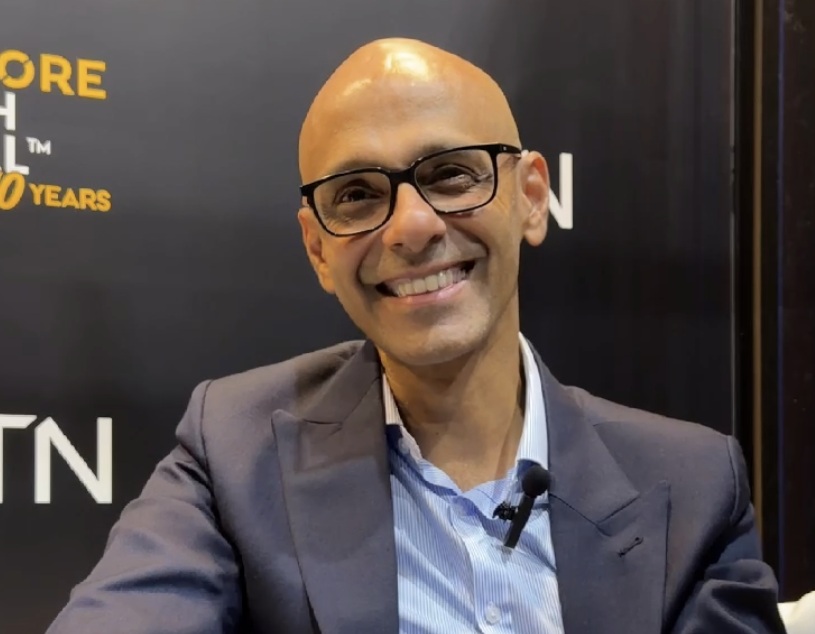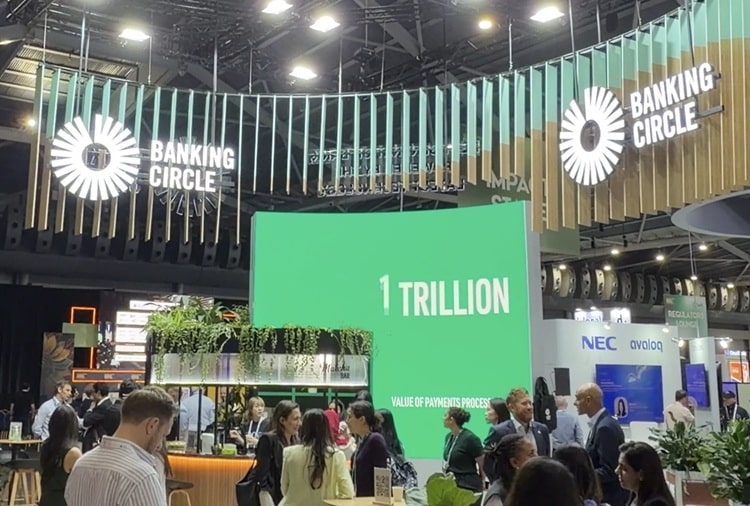SINGAPORE, November 19, 2025 – At the Singapore FinTech Festival 2025, the conversation around the future of payments centered squarely on a defining theme: stablecoins. For Banking Circle, a fully licensed, cloud-native bank headquartered in Luxembourg, this shift represents an industry-wide transition toward faster, more transparent and interoperable global financial infrastructure.
Speaking to AsiaBizToday, Kirit Bhatia, Chief Digital Assets Officer at Banking Circle, said the festival continues to be a vital forum where regulators, banks and fintech innovators shape the evolution of financial services. This year, however, the momentum behind stablecoins made the direction of travel unusually clear.
Stablecoins: The “Always On” Settlement Layer
Bhatia described stablecoins as the mechanism enabling fiat currencies to become globally available, instantly transferable, and continuously settleable—unlocking capabilities traditional infrastructure was never built to support.

He cited a recent U.S.-to-Singapore transaction that took three business days through traditional banking channels. On stablecoin rails, the same payment settled in under two minutes.
“When fiat becomes instantly available across borders, the entire logic of cross-border payments changes,” Bhatia explained. “Stablecoins also bring programmability, which enables automated, intelligent and highly efficient financial workflows.”
As regulatory regimes mature in Singapore, Dubai, Europe and the United States, he expects institutional adoption to accelerate at pace.
Building Hybrid Infrastructure for Fiat and Blockchain
Banking Circle already provides 24×7 settlement across 24 fiat currencies, eliminating T+2 delays for businesses operating across markets. Its strategy now includes extending that reliability and compliance-driven approach to digital asset rails.
The bank is developing:
- Regulated wallet and settlement infrastructure
- Multi-chain support across public and private blockchains
- On-chain monitoring and AML/KYC controls
- A unified customer interface abstracting blockchain complexity
“The customer should not have to think about private keys or chain selection,” Bhatia said. “They should simply move assets securely and seamlessly.”
A Dual Role in the Stablecoin Ecosystem
Banking Circle is among the only institutions globally to have a dual role in the stablecoin market – It issues a regulated euro-denominated stablecoin and it serves as a reserve bank for other major stablecoin issuers.
Rather than viewing this as a conflict, Bhatia calls it an advantage. “Our role is to provide the safest, most compliant infrastructure — regardless of which stablecoin customers choose.”
Tokenisation: A Multi-Trillion Dollar Shift
Tokenisation is rapidly becoming an area of focus for global asset managers such as BlackRock and Franklin Templeton, as well as emerging innovators in Singapore. “The expectation is that trillions of dollars of financial assets will move on-chain,” Bhatia said. “But for tokenised assets to scale, fiat settlement needs to move just as efficiently. Stablecoins are the natural solution.”
Bhatia pointed out that blockchain systems themselves are typically not the source of major breaches. Instead, vulnerabilities often lie in wallets, exchanges or smart contract implementations. “Security must be engineered through every step of the transaction flow,” he said. “We evaluate every layer of the infrastructure.”
For Banking Circle, institutional DeFi is not about anonymous, unregulated participation. Instead, it means using public blockchains within a fully compliant environment in which all entities are known and verified.
“Banks cannot operate in environments where the counterparty is unknown,” Bhatia emphasised. “That is non-negotiable.”
Bhatia expects regulatory divergence to persist globally:
- Europe’s MiCA is already live
- Singapore remains progressive but cautious
- Hong Kong is accelerating clarity
- Japan is exploring JPY stablecoins
- The U.S. is developing new frameworks
- China and India are unlikely to pursue stablecoin regimes
“Our responsibility is to simplify this fragmentation for our customers. There will never be one blockchain or one stablecoin. The future is multi-rail.”
Fiat Will Coexist With Digital Assets
Despite the shift toward tokenised finance, Bhatia does not anticipate fiat currencies disappearing in the foreseeable future. “Fiat isn’t going anywhere—not in the near term. What the world needs today is interoperability between traditional and digital finance.”
Following its in-principle approval for a Major Payment Institution license in Singapore and the acquisition of Australian Settlements Limited (ASL), Banking Circle is expanding its role as an infrastructure provider for the global payments ecosystem.
From regulated multi-currency settlement to digital asset infrastructure and stablecoin issuance, the bank is positioning itself to support the next generation of global financial rails. “The next phase of finance will enable money and assets to move globally, instantly and securely,” Bhatia said. “Our goal is to be the bank that powers that transition.”


